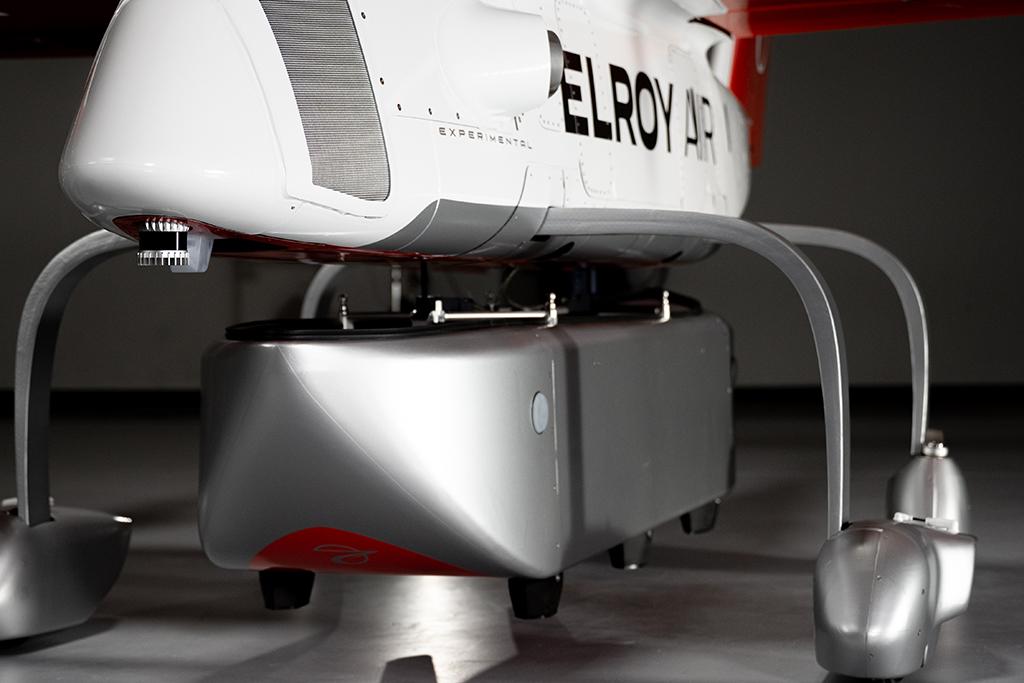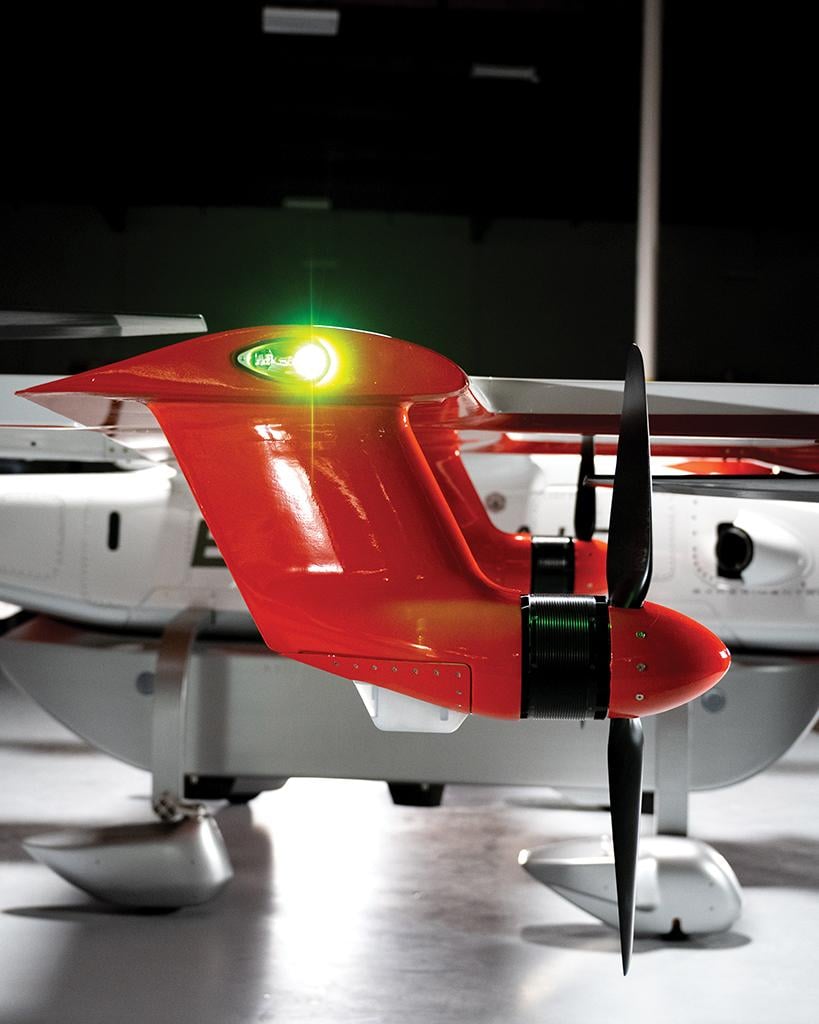
Growth in e-commerce is the fuel for a slew of startups that want to use electric propulsion and autonomous operation to dramatically reduce the cost and increase the use of air cargo.
A leader in that drive is San Francisco-based startup Elroy Air, which on Jan. 26 unveiled the first preproduction prototype of its Chaparral autonomous cargo aircraft, revealing a revised design for the hybrid-electric vertical-takeoff-and-landing (eVTOL) vehicle.
- Preproduction Chaparral planned to fly in second quarter
- Mesa Airlines signs letter of intent to order 150 aircraft
Elroy also announced a letter of intent (LOI) from U.S. regional carrier Mesa Airlines for 150 aircraft to serve the express parcel and health care sectors. The company says it now has agreements for more than 500 aircraft valued at more than $1 billion from commercial, defense and humanitarian customers. AYR Logistics, a UK helicopter operator that supports relief organizations such as the United Nations’ World Food Program, has committed to purchase up to 100 Chaparrals.
The startup has designed the autonomous Chaparral to enable commercial logistics operators to establish new middle-mile transportation networks to deliver packages more cheaply than conventional air cargo and faster than box trucks. But co-founder and CEO David Merrill says initial deliveries will be for applications that do not require FAA certification, including military, humanitarian and international customers.
Elroy will build two preproduction prototypes and expects to begin flight testing in the second quarter, supported by the U.S. Air Force under a contract from its Agility Prime program. The company plans to stand up a low-rate initial production line by year-end and begin Chaparral deliveries in 2023, Merrill says.
The company flew an early prototype in August 2019. That aircraft was all-electric, with six lift rotors on two booms, a pusher propeller for wingborne cruise flight and a forward wing connecting the booms.
The preproduction Chaparral has a turbine-based hybrid-electric propulsion system with eight lift rotors on four underwing booms and four tractor propellers on the wing leading edge for cruise. The 1,340-lb. dry-weight aircraft has a conventional T-tail configuration with a 27.5-ft.-span high-set wing.
The Chaparral is designed to fly 300-500 lb. of cargo up to 300 mi. The payload is carried in a cargo pod under the fuselage. The pod is loaded and unloaded away from the aircraft. Operation is intended to be fully automated, with the aircraft locating and taxiing to the waiting pod, picking it up, taking off, flying to the destination, landing and taxiing in, then lowering the pod to the ground and picking up another one.

Beacons on the pod enable it to be located autonomously by the aircraft using radio-frequency triangulation, Merrill says. Electric motors in the wheel pants maneuver the aircraft on the ground.
Elroy has developed the hybrid-electric powertrain in-house to give the aircraft longer range and the ability to operate in austere environments where battery charging infrastructure is not available. The complete powertrain and flight control system are being ground-tested using a full-scale iron bird.
The series-hybrid system comprises a small, 150-kW turboshaft engine in the nose driving a generator that powers the electric motors throughout the flight. A small dual-redundant battery pack boosts electrical power for vertical takeoff and landing and is recharged in flight by the turbogenerator.
Lift rotors are mounted in fore/aft pairs on underwing booms. Forward rotors are below the booms to minimize turbulence over the wing. Aft rotors are above the booms to provide clearance to stow the wing for transportation. Cruise propellers are mounted on pylons under the wing to minimize interference.

The aircraft is designed to be transportable without disassembly in a standard 40-ft. shipping container or a Lockheed Martin C-130 airlifter. The T-tail hinges down to provide room for the wing to pivot to align with the fuselage, enabling the Chaparral to be transported without being disassembled.
Founded in 2016, Elroy completed a $40 million Series A funding round in August 2021. Led by Lockheed Martin Ventures and Marlinspike Capital, this took the total raised so far by the startup to $48 million. Funding includes an additional $1.7 million received from the U.S. Air Force’s AFWerx innovation unit in late 2021 alongside Elroy’s Phase 3 small-business contract under the Agility Prime program.
Merrill says Elroy is working with the Air Force to obtain military flight release for the Chaparral and begin flight testing with Agility Prime. First flights are likely to take place at Camp Roberts in California, where the early prototype was flown in cooperation with the Naval Postgraduate School.
While military and humanitarian missions are early market opportunities, Elroy is working with the FAA on Part 23 type certification of the Chaparral, and Merrill says the company’s ultimate goal is to enable same-day shipping to everyone by making it possible to create new networks of air cargo routes.
For Mesa Airlines, the LOI with Elroy is the latest in a series of commitments to future advanced air mobility aircraft, including Archer’s eVTOL air taxi and Heart Aerospace’s 19-seat electric regional airliner.
Explaining the airline’s interest in the Chaparral, Mesa Chairman and CEO Jonathan Ornstein says: “We are not even creating a market. We are answering demand that exists in the market today that is currently unanswered.” He cites increasing demand for same- and next-day delivery, particularly to rural communities, as well as pilot shortages and environmental regulations that could favor autonomous electric aircraft.




Comments